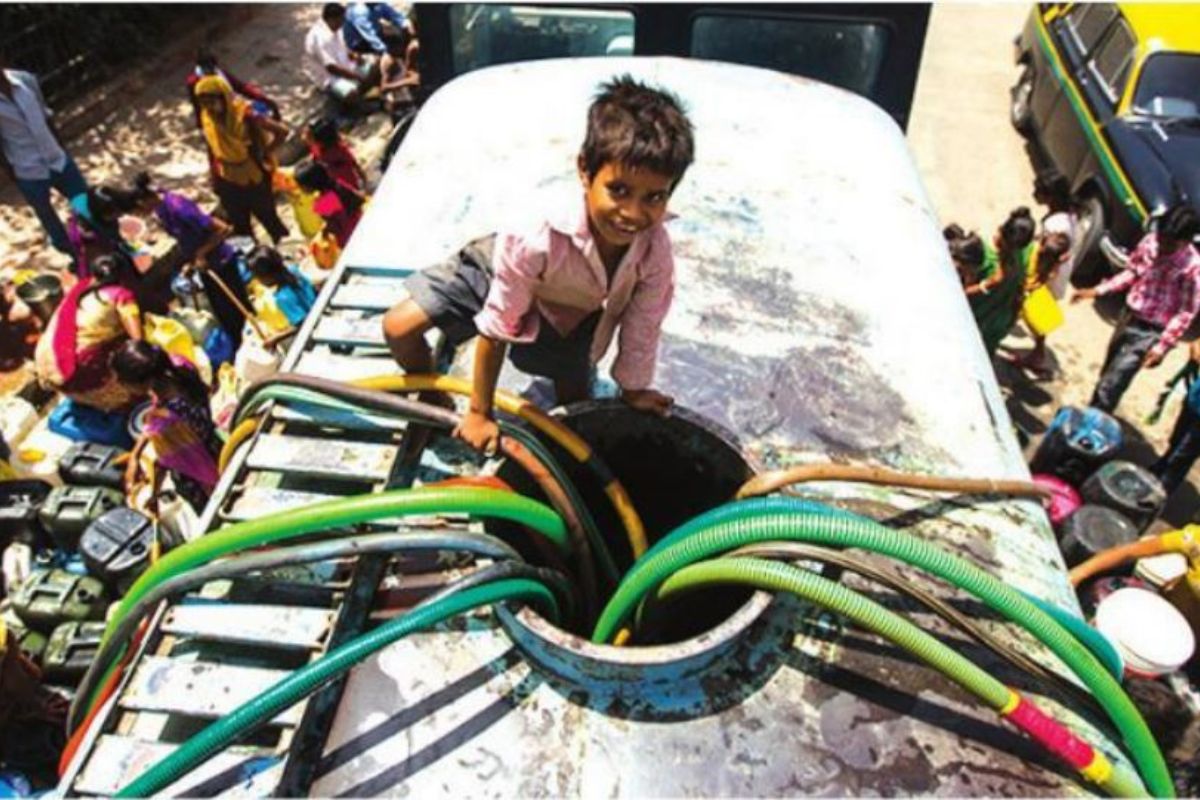Water resources are essential for economic development. India has 4 per cent of global water resources for its use. India’s water resources are under immense pressure. The country receives more than 80 per cent of its rainfall between June and September every year.
There is vast special and temporal variation in the distribution of annual rainfall of around 1105 mm. The unequal special distribution of water can be observed by the fact that while the Ganga Basin has around 1039 cubic meters per capita water availability, the Brahmaputra and Barak basin have per capita availability of over 11000 cubic meters per capita. India is a water-stressed nation as defined by the United Nations and it is likely to reach a water scarcity position in the coming years. About 2000 billion cubic meters of water resources is annually generated in India.
Advertisement
Of these, the water that can be utilised beneficially is 1123 bcm. The rest of the water cannot be used due to various limitations. Of the available water resources, 690 bcm are from surface water contributions and the remaining are from groundwater contributions. Water quality – both surface water and groundwater – is unsatisfactory. Water contamination is on the rise due to unplanned urbanisation and untreated effluents emitted by industries. There is a declining trend in water availability due to high population growth and rapid urbanisation.
By 2030, according to the NITI Aayog report (2019), India’s water demand will be twice the available supply. The agricultural sector is predominant for water use followed by the industrial and domestic sectors. The demand for water is rapidly growing in various sectors. Across the water sectors, India is experiencing competition. India is committed to implementing sustainable development goals framed by the United Nations.
Thus India is committed to implementing SDG 6 relating to the availability and sustainable management of water and sanitation for all. Achieving universal and equitable access to safe and affordable drinking water for all (SDG 6.1); achieving access to adequate and equitable sanitation and hygiene for all and ending open defecation (SDG 6.2); improving water quality by reducing pollution, eliminating dumping, halving the proportion of untreated wastewater and substantially increasing recycling and safe reuse globally (SDG 6.3), and substantially increasing water use efficiency in all sectors are some of the important goals India like other nations is committed to achieving by 2030 or even earlier.
Human-induced climate change is now a reality. Global warming to the extent of 1.5°C or 2°C depending on the steps undertaken by various countries, has been the talk in the arena of climate change activities. The impact of climate change on the hydrological cycle is very evident. The frequency of floods and droughts in India is now a reality. This will result in water resource variability, thus affecting the water reuse by people.
Steps to ensure water security in India are undertaking rainwater harvesting for conserving water, high water use efficiency across all sectors, treating wastewater and its recycling and water reuse, increasing the capacity of dams in the country and increasing the potential of hydropower thereof, recharging groundwater etc.
The details of these areas are indicated below: First, rainwater harvesting (RWH) allows water conservation in the country. The rainwater harvesting process incorporates the collection and storage of collected rainwater with the help of artificially designed systems. Such artificial recharge structures could be a major intervention to augment the water supply, thereby improving groundwater resource availability.
For both urban and rural contexts, the traditional methods along with modern storage options can address the root cause of water security by ensuring water availability for domestic, agricultural, and other uses. Once installed, RWH becomes a simple low-cost technique that offers multiple benefits. The water storage tank is usually the principal capital investment. The installation of RWH structures is more cost-effective when done at the construction stage of the building.
Even if the installation takes place at a later stage, the cost ranges between Rs. 2,000 and Rs. 30,000 for a 300 sqm built house. This cost reduces drastically when taking a parsimonious approach such as the use of underground or overhead plastic tanks (Rs. 2/L and Rs. 3.5/L) or Ferro-cement tanks (Rs. 12,430 for 5,000L and Rs. 15,800 for 10,000L tanks). The installation of a rainwater harvesting system also saves total cost when the water is used for vegetable irrigation.
Second, agriculture is the sector with the largest water footprint in India. It has one of the lowest water productivity for major crops. One of the main reasons for this is low water use efficiency. Currently, the water use efficiency in Indian agriculture is one of the poorest in the world. An FAO report found that the average water use efficiency worldwide is a little over US dollars 15 per cubic meter (cum) while India has one of the lowest water use efficiency of only USD 1.9 per cum.
In the industrial sector also there is poor water use efficiency. Similarly in the domestic sector, the non-revenue water is to an extent of 40 per cent of the water supply. If the water use efficiency is increased in all these three sectors, more water will be available for use and water security will be enhanced. Third, SDG 6.3 mandates halving the proportion of untreated wastewater and substantially increasing recycling and safe reuse globally.
The Jal Jeevan Mission programme for tap water connection to rural areas (by 2024) also mandates recycling and reuse of wastewater in rural areas for water sustainability. If the water is untreated through the use of technology, the surface water and groundwater get contaminated. In India 62 per cent of municipal sewage is left untreated, similarly, 38 per cent of industrial effluent is untreated in India.
As a result, surface water bodies get contaminated due to the large-scale release of sewage and effluent in them. Similar is the case of groundwater resources which get contaminated due to untreated wastewater. Thus for enhanced water security, treatment of wastewater should be the norm and recycling the treated wastewater should be adopted in various sectors for their various uses.
Water security has to be ensured for fulfilling certain mandates of the government. The government has ambitious programmes. India aims to boost the manufacturing sector GDP from 16 per cent to 25 per cent by 2024. Similarly, there is the “Har Ghar Jal Programme” which plans to provide 100 per cent piped water supply connection to rural households by 2024. There are many other schemes which require sustainable water security in the country.
If India wants to achieve a higher level of growth per capita GDP, it is necessary to reduce the water intensity of its economy to make water available for other sectors and thereby avoid water shortages and related water conflicts. There is a need for stringent policy initiatives for long-term and sustainable solutions. An integrated water management plan must be brought up by local bodies and implemented at the local level. This approach will ensure better water security in the country.
















